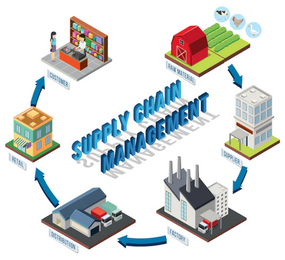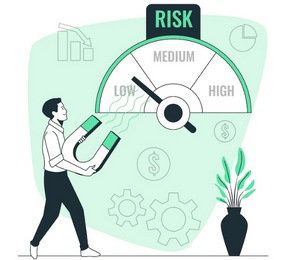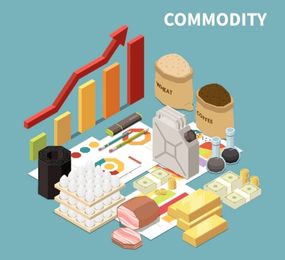Enterprise risk management (ERM) and supply chain risk management (SCRM) are two closely connected ideas that are crucial to the management of hazards in enterprises. Whereas SCRM focuses on managing risks connected with the procurement of products and services from external vendors, ERM is a larger framework that focuses on detecting, assessing, and managing risks throughout the entire business.
The relationship between SCRM and ERM is mutually beneficial since a strong SCRM program can improve ERM's overall performance by supplying vital data and understanding about the risks related to the organisation's supply chain. This, in turn, helps firms to build a more complete and integrated approach to risk management.
The two ideas are related in the following particular ways:
Identification of Risks: The identification of potential hazards is a component of both SCRM and ERM. The main objective of SCRM is to identify risks related to suppliers, such as supply chain disruptions, quality problems, or compliance violations. The identification of risks across the business, including those that are strategic, financial, operational, and compliance-related, is part of enterprise risk management (ERM). Organisations can better understand their risk environment and approach risk management more proactively by integrating the two methods.
Risk Assessment: Following the identification of risks, both SCRM and ERM include evaluating the likelihood and potential consequences of such risks. In SCRM, this entails assessing the risks connected to certain suppliers and the potential effects of a disruption in the supply chain on the company. ERM, on the other hand, entails determining the probability and potential consequences of risks for the entire organisation. Organisations can create a more thorough risk assessment that considers both internal and external concerns by combining these two methodologies.
Mitigation Strategies: Creating mitigation strategies to handle identified risks is a component of both SCRM and ERM. In SCRM, this can entail creating backup plans to handle supplier disruptions or alternate sourcing plans to lessen reliance on a single supplier. Implementing controls to lessen the likelihood or impact of risks that have been identified may be one of the mitigation techniques in ERM. Organisations can create a more potent and well-rounded risk mitigation plan by combining the two methods.
Communication and Reporting: Lastly, reporting on risk management actions and conveying risk information are both components of SCRM and ERM. In SCRM, this may entail reporting on supplier performance as well as communicating with suppliers to make sure they are aware of the organisation's risk management requirements. Giving senior management and the board of directors regular information on risk management initiatives may be part of communication and reporting in ERM. Organisations can make sure that stakeholders are aware of the organisation's entire risk profile and that risk information is effectively conveyed throughout the organisation by combining these two approaches.
In conclusion, for organisations to successfully manage risks across the entire organisation, the synergy between SCRM and ERM is essential. By integrating the two methodologies, firms may acquire a more full picture of their risk landscape, produce more thorough risk assessments, execute more effective mitigation plans, and communicate risk information more effectively.
Find out more on “The Synergy Between Supply Chain Risk Management and ERM” on 30th May - 1st June, 2023 at the Supply Chain Risk and Resilience Forum, in Berlin, Germany so you don't feel left out in the industry!
To register or learn more about the Forum please check here: https://bit.ly/3DsfWE4
For more information and group participation, contact us: [email protected]
















